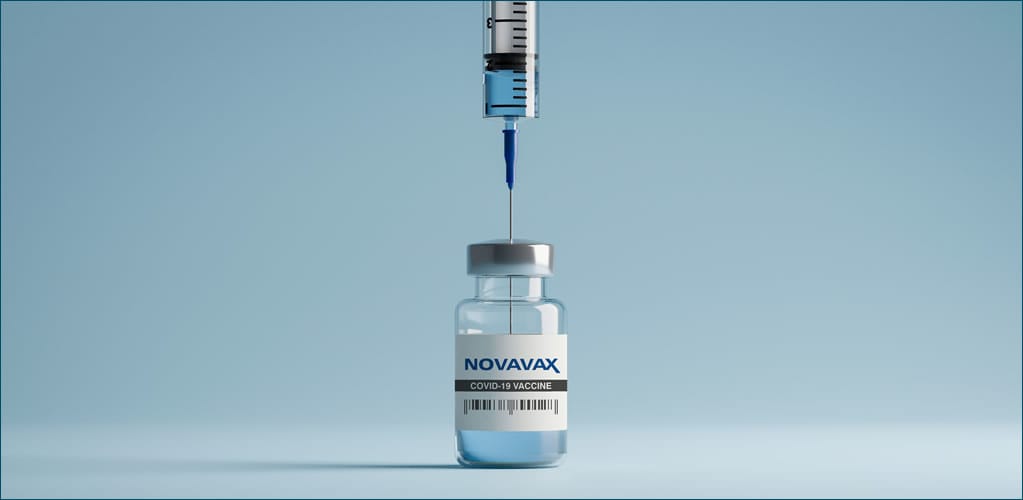Novavax COVID vaccine is nearing approval – What impact will it have?
Beset by delays, this vaccine is becoming available when low-income countries are desperately short of doses.

Beset by delays, this vaccine is becoming available when low-income countries are desperately short of doses.
First published in November 2021.
T he pandemic has been rumbling on for two years and is probably going to rumble on for years to come. And despite recent excitement about new drugs to treat COVID, it’s still vaccines that will underpin each country’s route out of the pandemic.
Immunisation has proven a highly effective way of stopping people from developing severe COVID. Vaccines can be given to large numbers of people to offer long-term protection in a way that other treatments, such as antiviral drugs, can’t. Vaccines also reduce the risk of getting infected and passing the virus on.
Many different vaccines are now available globally, with billions of doses administered. Yet because they’ve been unequally bought up, with richer countries capturing the lion’s share, only half the world has received at least one COVID vaccine dose.
So it’s good that there are additional vaccines showing promise that could soon be widely available to boost supplies – such as Novavax’s.
How this vaccine works
The Novavax jab is a protein subunit vaccine, and so is different from the mRNA vaccines developed by Moderna and Pfizer, the viral-vectored vaccines made by AstraZeneca and Johnson & Johnson, and the inactivated-virus vaccines made by Sinovac and Sinopharm.
Protein subunit vaccines contain a key part of whatever it is that they protect against. In this case, to protect against the coronavirus, they contain the spike proteins that cover the virus’s surface, which the immune system can easily recognise. When the real virus is encountered in the future, the immune system has defences that are trained to attack these outer parts of the virus and quickly destroy it.
The spike proteins – by themselves harmless, being incapable of causing a COVID infection – are manufactured, intriguingly, within moth cells. The proteins are then purified and added to an adjuvant, an ingredient that enhances the immune response. The adjuvant here is made from an extract from the soapbark tree.
This subunit approach isn’t new. Vaccines for human papillomavirus and hepatitis B have used similar methods. Both are safe and effective.
The Novavax COVID vaccine also looks like it performs well. In phase 3 trials (the final phase of testing in humans) it was 90% protective against developing symptomatic COVID, with no severe cases reported among those receiving the vaccine (and thus, in essence, 100% protection against hospitalisation and death was observed). Its safety profile appears to be at the very least comparable, if not better than, the Pfizer and Moderna vaccines.
These published analyses pitted the vaccine against the alpha and beta variants, but not delta. However, a press release covering a trial investigating the use of Novavax as a booster suggests it’s highly effective at generating antibodies, including against delta.
What effect will it have?
Novavax’s vaccine looks like a very exciting product, but its future depends on it being authorised by some of the world’s key regulators.
It has received emergency use authorisation in Indonesia and the Philippines, and has completed submissions for regulatory approval to the UK, the EU regulator, Canada and also to the World Health Organization (WHO), which covers recommendations for low-income countries. Further submissions are expected to follow in other countries, including New Zealand and the US.
In the short term, most richer countries have significant stocks of existing vaccines, meaning their immediate rollouts and booster programmes are probably covered. The longer-term need for further doses in these countries is uncertain.
However, if the vaccine became available in rich countries, it could be a useful tool for reaching the vaccine-hesitant. Some people who have avoided the newly developed mRNA and viral-vectored products due to safety concerns have said they would take a vaccine like Novavax’s that’s based on a more traditional method.
But the most appropriate use of Novavax over the next year or two would be to help reduce the extensive COVID vaccine inequity that exists. Only 6% of the population of sub-Saharan Africa has received two doses of any COVID vaccine. In low-income countries, less than 5% have received even one dose.
The Novavax vaccine also only needs to be refrigerated rather than frozen for storage, making it an attractive product for low-income countries. Yet to reach these countries it would probably need to be distributed through the global vaccine-sharing scheme, Covax, and getting the vaccine authorised by the WHO is a prerequisite for this.
Plus, there remain concerns that high-income countries will buy up most of the doses, regardless of their need for them. The UK, for example, has 60 million doses on order, and deals with the US and EU for 100 million and 200 million doses respectively. It’s unlikely these countries will have a genuine need for them. There simply has to be improved global sharing of available supplies.
A further issue is that the company has reportedly struggled with the manufacturing process, with doubts raised about its ability to produce the vaccine in large quantities. It’s believed that this is the main reason its submissions for regulatory approval have been delayed. It had expected to file for authorisation in the first half of 2021.
India, though, may come to the rescue here. The Serum Institute of India will make the Novavax doses that will be supplied to Indonesia, and it has already ramped up production of other vaccines licensed to it for production – in particular the AstraZeneca vaccine. The institute is reportedly producing 240 million doses of COVID vaccines each month.
Having additional safe and effective vaccines will be vital to minimising the future impact of COVID. Novavax looks like a very helpful product, but from a global perspective, hopes rest on its approval by the WHO and on supplies being available. Other countries will be following the WHO’s decision making – and the vaccine’s performance in Indonesia and the Philippines – with great interest.








[Read our Comments Guidelines]